National Treasure
Explore The Interactive FlagNew York stockbroker Eben Appleton inherited the Star-Spangled Banner upon his mother's death in 1878. The publicity that it had received in the 1870s had transformed it into a national treasure, and Appleton received many requests to lend it for patriotic occasions. He permitted it to go to Baltimore for that city's sesquicentennial celebration in 1880. After that his concern for the flag's deteriorating condition led him to keep it in a safe-deposit vault in New York. In 1907 he lent the Star-Spangled Banner to the Smithsonian Institution, and in 1912 he converted the loan to a gift.
Appleton donated the flag with the wish that it would always be on view to the public. Museums constantly balance the desire to display an object with the need to protect it from the damage created by light, dust, and other environmental factors. The Smithsonian has had to balance its effort to fulfill his wishes with the need to care for the fragile and damaged object.
Preservation ProjectCollect Stars To Complete The Flag
What did Amelia Fowler do to the flag when the Smithsonian first received it?
- She designed a glass case for the flag
- She sewed a linen lining to the back of the flag to support it for display
- She cleaned the flag so it would look better once it was on permanent display
-

Canvas Bag
The Armistead family kept the Star-Spangled Banner in this large canvas bag.
-
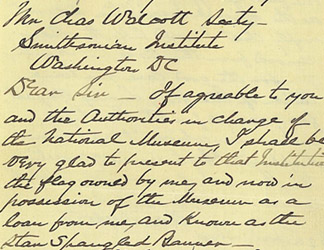
(Page 1) Letter from Eben Appleton to Charles Walcott, Secretary of the Smithsonian Institution, 1912
Eben Appleton expressed great confidence (PDF) in the Smithsonian's ability to care for his family's treasure.
-
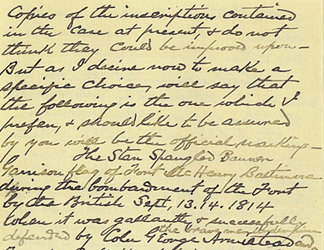
(Page 2) Letter from Eben Appleton to Charles Walcott, Secretary of the Smithsonian Institution, 1912
Eben Appleton expressed great confidence (PDF) in the Smithsonian's ability to care for his family's treasure.
-
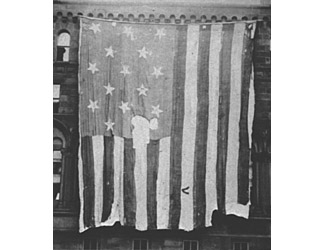
On Display at the Smithsonian Castle
The public was so interested in the flag that Francis Scott Key had seen “by the dawn’s early light†that members of the press clamored for an opportunity to photograph it. Three days after it arrived in Washington, the flag was briefly displayed from the Smithsonian castle.
-
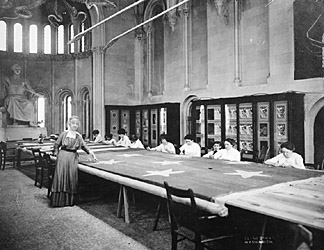
Amelia Fowler and Team Preserving the Flag in the Smithsonian Castle
In 1914 the Smithsonian hired Amelia Fowler, a professional flag restorer, to preserve the flag. With a team of needlewomen, she sewed the flag to a linen backing using a uniform network of stitches.
-
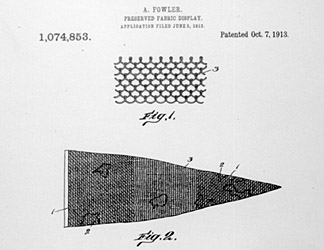
Fowler’s Patent
Amelia Fowler patented her preservation technique, which created a web of stitches that secured the flag to a linen backing.
-
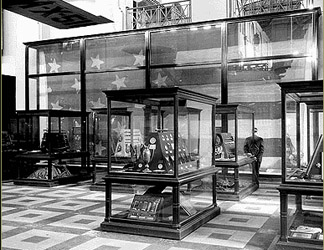
On Display in the Arts and Industries Building
After Fowler’s treatment, the flag was displayed in a specially constructed glass case in the Arts and Industries building. Visitors saw only a portion of the flag, but could get very close to it. Courtesy of National Geographic Society.
-

Vacuuming the Flag, 1959
Smithsonian staff removed the flag from its display case from time to time to monitor its condition and to keep it as clean as possible.
-
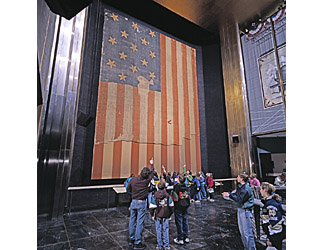
National Museum of American History, 1989
When the new Museum of History and Technology (now NMAH) opened in 1964, the Star-Spangled Banner was featured in the central Flag Hall where it remained for over 30 years.
-

Protective “Olioâ€
To protect the Star-Spangled Banner from exposure to light and debris, the Museum installed a moveable screen in front of the flag in 1982. It was lowered hourly to reveal the flag.









